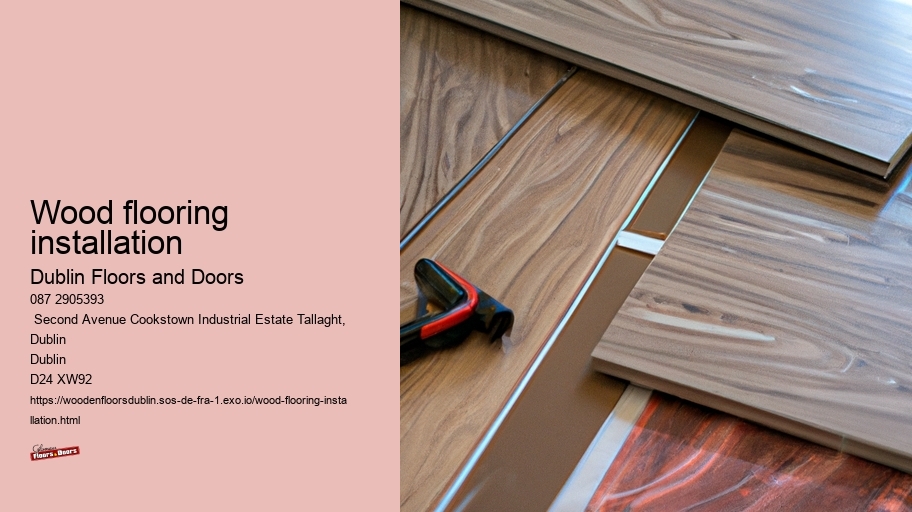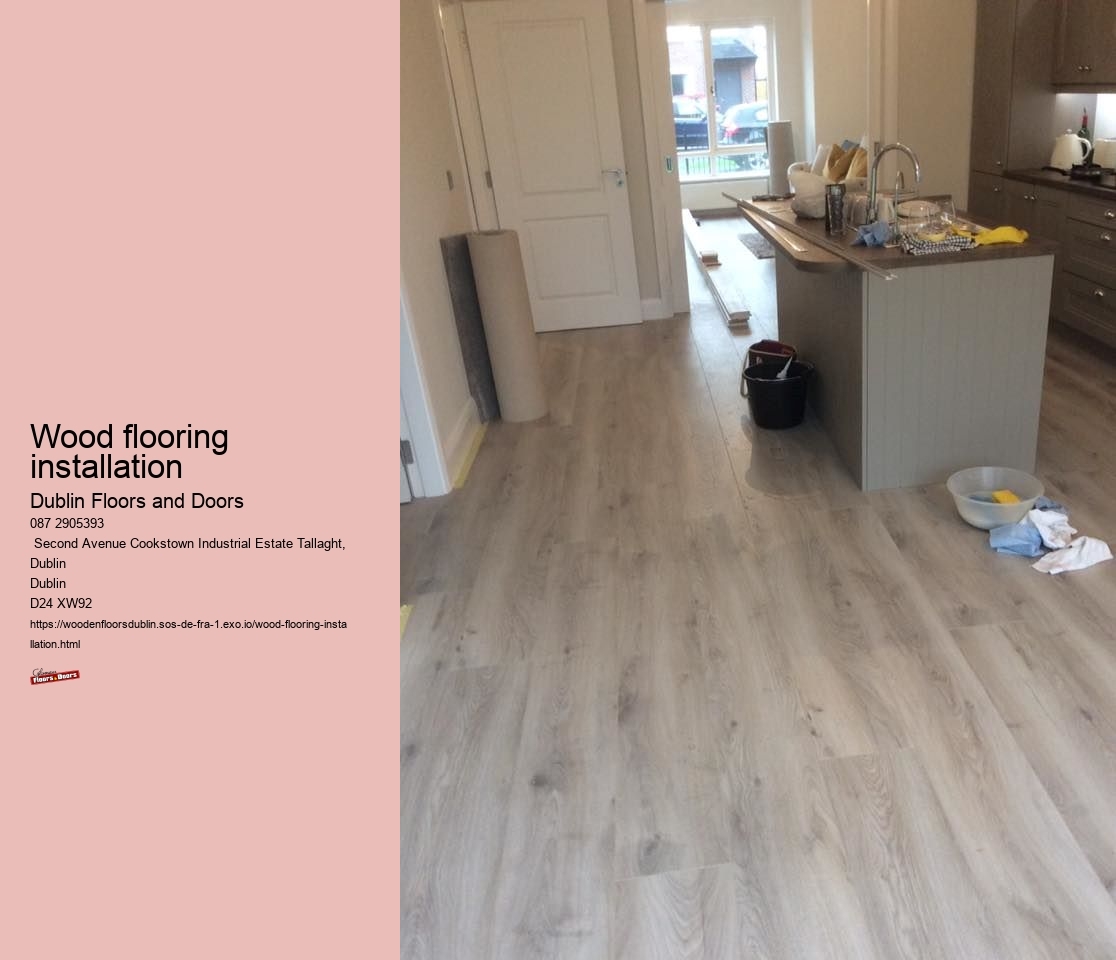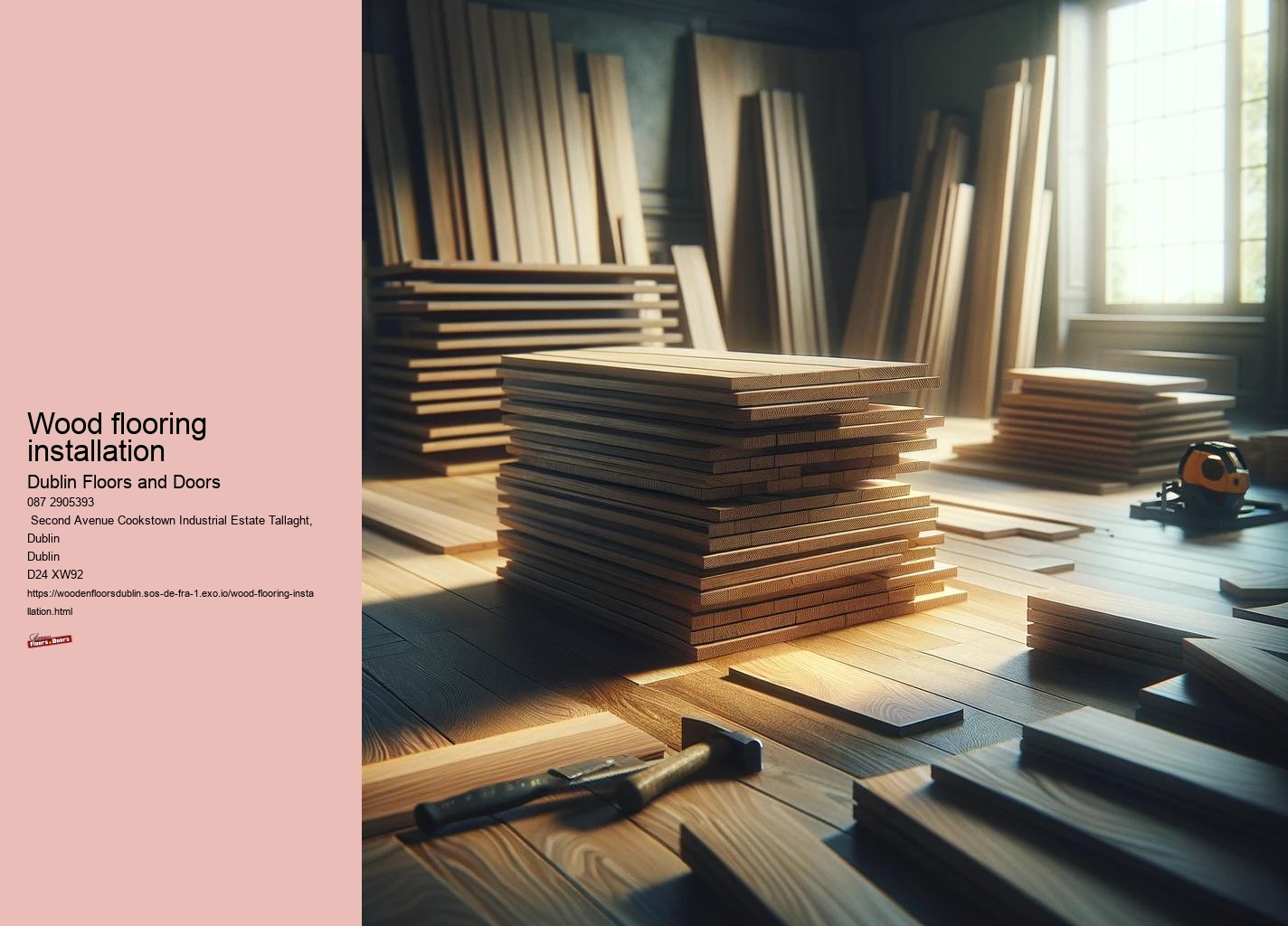

Unlike engineered wood flooring, solid wood does not contain layers of plywood, present-ing a solid hardwood surface throughout. While solid wood flooring may swell in humid environments and is not recommended for very wet areas, its classic appearance and the ability to refinish make it a popular choice for those seeking durability and a traditional aesthetic in their homes.
Crafted with a layered construction featuring a thin veneer of hardwood atop plywood, engineered wood flooring offers a modern alternative to solid wood, providing excellent durability and stability for diverse indoor environments.
• Versatility: Engineered wood flooring can be installed in basements and over concrete subfloors, expanding design possibilities.
• Eco-Friendly: By using less hardwood than solid wood flooring, engineered wood promotes sustainable forestry practices.
• Resilience: Engineered wood is more resistant to temperature and humidity fluctuations, making it ideal for areas prone to climate variations.
When considering the installation of hardwood or engineered wood flooring, it is essential to assess the specific requirements of the space to ensure a successful and lasting re-sult.
Laminate floors are composed of multiple layers that are fused together through a lamination process. Here's a breakdown of the typical layers found in laminate flooring:
1. **Wear Layer**: The top layer is a clear, protective coating made from aluminum oxide or melamine resin. This layer provides resistance to scratches, stains, and wear, ensuring the durability of the flooring.
2. **Decorative Layer**: Below the wear layer is a high-resolution photographic layer that mimics the appearance of natural materials such as wood, stone, or tile. This decorative layer gives laminate flooring its realistic look.
3. **Core Layer**: The core of laminate flooring is usually made from high-density fiberboard (HDF) or medium-density fiberboard (MDF). This layer provides stability, strength, and resistance to impacts and moisture.
4. **Backing Layer**: The bottom layer is a melamine resin layer that provides additional stability and moisture resistance. It also helps balance the floor to prevent warping.
### Composition Details:
- **Aluminum Oxide**: A compound used in the wear layer for its hardness and durability.
- **Melamine Resin**: A type of plastic used in the wear and backing layers for its strength and moisture resistance.
- **High-Density Fiberboard (HDF)**: A dense, engineered wood product made from wood fibers bonded with resin under heat and pressure.
- **Medium-Density Fiberboard (MDF)**: Similar to HDF but with a slightly lower density, used in some laminate cores.
### Key Characteristics:
- **Durability**: Laminate floors are highly durable and resistant to scratches, dents, and fading.
- **Affordability**: Typically more cost-effective than hardwood or stone flooring while offering similar aesthetics.
- **Easy Installation**: Often designed with click-lock or tongue-and-groove systems that make DIY installation straightforward.
- **Versatility**: Available in a wide range of styles and designs to match various decors.
- **Low Maintenance**: Easy to clean and maintain, requiring only regular sweeping and occasional damp mopping.
Laminate flooring is a popular choice for homeowners seeking the look of natural materials without the high cost or maintenance requirements.
Maintaining laminate floors involves regular cleaning and care to ensure their longevity and appearance. Here are some key steps and tips for maintaining laminate floors:
### Regular Cleaning
1. **Sweeping or Vacuuming**: Regularly sweep or vacuum your laminate floors to remove dust, dirt, and debris. Use a soft-bristle broom or a vacuum cleaner with a hard floor attachment to avoid scratching the surface.
2. **Damp Mopping**: Clean the floor with a damp mop (not wet) using water or a laminate floor cleaner. Avoid using excessive water as it can seep into the seams and cause damage. Wring out the mop thoroughly before using it on the floor.
### Spot Cleaning
3. **Spills and Stains**: Wipe up spills immediately with a dry or slightly damp cloth. For stubborn stains, use a mild cleaner specifically designed for laminate floors. Avoid abrasive cleaners, steel wool, or scouring pads as they can damage the surface.
4. **Streaks and Residue**: If you notice streaks or residue after mopping, buff the area with a dry microfiber cloth. Make sure to use a cleaner that doesn’t leave a residue.
### Protective Measures
5. **Furniture Pads**: Attach felt pads to the bottoms of furniture legs to prevent scratches when moving furniture. Avoid dragging heavy objects across the floor.
6. **Rugs and Mats**: Place rugs or mats at entryways to reduce the amount of dirt and moisture brought onto the floor. Use non-slip, non-rubber-backed mats to avoid any potential damage to the floor.
7. **Humidity Control**: Maintain consistent indoor humidity levels (between 35% and 65%) to prevent the laminate from expanding or contracting. Use a dehumidifier in humid climates and a humidifier in dry climates.
### Avoiding Damage
8. **High Heels and Pet Nails**: Avoid walking on laminate floors with high heels or cleats, as they can cause dents or scratches. Trim your pets' nails regularly to prevent them from scratching the floor.
9. **Sunlight Exposure**: Prolonged exposure to direct sunlight can cause the laminate to fade. Use curtains or blinds to limit direct sunlight or rearrange furniture periodically to ensure even exposure.
### Long-Term Care
10. **Refinishing**: Unlike hardwood floors, laminate floors cannot be refinished. If the floor gets damaged or worn out, you may need to replace the affected planks or consider a full replacement if necessary.
### Additional Tips
- **Avoid Wax or Polish**: Do not use wax, polish, or oil-based products on laminate floors as they can create a slippery surface and damage the finish.
- **Gentle Cleaners**: Use gentle cleaners that are pH neutral and specifically designed for laminate floors. Avoid using harsh chemicals like ammonia, bleach, or vinegar.
- **Professional Cleaning**: Consider professional cleaning periodically to keep your laminate floors in top condition.
By following these maintenance tips, you can keep your laminate floors looking clean and beautiful for many years.
Maintaining laminate floors involves regular cleaning and care to ensure their longevity and appearance. Here are some key steps and tips for maintaining laminate floors:
### Regular Cleaning
1. **Sweeping or Vacuuming**: Regularly sweep or vacuum your laminate floors to remove dust, dirt, and debris. Use a soft-bristle broom or a vacuum cleaner with a hard floor attachment to avoid scratching the surface.
2. **Damp Mopping**: Clean the floor with a damp mop (not wet) using water or a laminate floor cleaner. Avoid using excessive water as it can seep into the seams and cause damage. Wring out the mop thoroughly before using it on the floor.
### Spot Cleaning
3. **Spills and Stains**: Wipe up spills immediately with a dry or slightly damp cloth. For stubborn stains, use a mild cleaner specifically designed for laminate floors. Avoid abrasive cleaners, steel wool, or scouring pads as they can damage the surface.
4. **Streaks and Residue**: If you notice streaks or residue after mopping, buff the area with a dry microfiber cloth. Make sure to use a cleaner that doesn’t leave a residue.
### Protective Measures
5. **Furniture Pads**: Attach felt pads to the bottoms of furniture legs to prevent scratches when moving furniture. Avoid dragging heavy objects across the floor.
6. **Rugs and Mats**: Place rugs or mats at entryways to reduce the amount of dirt and moisture brought onto the floor. Use non-slip, non-rubber-backed mats to avoid any potential damage to the floor.
7. **Humidity Control**: Maintain consistent indoor humidity levels (between 35% and 65%) to prevent the laminate from expanding or contracting. Use a dehumidifier in humid climates and a humidifier in dry climates.
### Avoiding Damage
8. **High Heels and Pet Nails**: Avoid walking on laminate floors with high heels or cleats, as they can cause dents or scratches. Trim your pets' nails regularly to prevent them from scratching the floor.
9. **Sunlight Exposure**: Prolonged exposure to direct sunlight can cause the laminate to fade. Use curtains or blinds to limit direct sunlight or rearrange furniture periodically to ensure even exposure.
### Long-Term Care
10. **Refinishing**: Unlike hardwood floors, laminate floors cannot be refinished. If the floor gets damaged or worn out, you may need to replace the affected planks or consider a full replacement if necessary.
### Additional Tips
- **Avoid Wax or Polish**: Do not use wax, polish, or oil-based products on laminate floors as they can create a slippery surface and damage the finish.
- **Gentle Cleaners**: Use gentle cleaners that are pH neutral and specifically designed for laminate floors. Avoid using harsh chemicals like ammonia, bleach, or vinegar.
- **Professional Cleaning**: Consider professional cleaning periodically to keep your laminate floors in top condition.
By following these maintenance tips, you can keep your laminate floors looking clean and beautiful for many years.
Wooden floors can be environmentally friendly, but their impact depends on several factors such as the type of wood, the sourcing practices, and the manufacturing process. Here are key considerations to determine the environmental friendliness of wooden floors:
### Factors Affecting Environmental Friendliness
1. **Sustainable Sourcing**:
- **Certification**: Look for wood certified by organizations like the Forest Stewardship Council (FSC) or the Programme for the Endorsement of Forest Certification (PEFC). These certifications ensure the wood is harvested from sustainably managed forests.
- **Local Sourcing**: Choose wood sourced locally to reduce the carbon footprint associated with transportation.
2. **Type of Wood**:
- **Reclaimed Wood**: Using reclaimed or recycled wood reduces the need for new trees to be cut down and gives new life to materials that would otherwise be discarded.
- **Fast-Growing Species**: Opt for wood from fast-growing species like bamboo or cork, which regenerate more quickly than hardwoods like oak or maple.
3. **Manufacturing Process**:
- **Low-Emission Adhesives**: Choose wood products manufactured using low-emission adhesives and finishes to minimize the release of volatile organic compounds (VOCs) that can harm indoor air quality and the environment.
- **Energy-Efficient Production**: Support companies that use energy-efficient production methods and renewable energy sources in their manufacturing processes.
4. **Longevity and Durability**:
- **Durable Wood Types**: Select hardwood species known for their durability, which can last for decades and reduce the need for frequent replacement.
- **Proper Maintenance**: Properly maintaining wooden floors extends their lifespan, reducing the environmental impact associated with replacement and disposal.
5. **End-of-Life Considerations**:
- **Recyclability**: Wooden floors are biodegradable and can be recycled or repurposed at the end of their life cycle.
- **Disposal**: Unlike synthetic flooring materials, wood can decompose naturally, minimizing environmental harm.
### Benefits of Wooden Floors
- **Carbon Sequestration**: Trees absorb carbon dioxide as they grow, and this carbon remains stored in the wood throughout its lifespan.
- **Renewable Resource**: Wood is a renewable resource, especially when sourced from responsibly managed forests.
- **Biodegradability**: Wood is biodegradable, reducing waste and environmental pollution compared to non-biodegradable flooring materials.
### Potential Environmental Drawbacks
- **Deforestation**: Unsustainable logging practices can lead to deforestation, habitat destruction, and biodiversity loss.
- **Transport Emissions**: Transporting wood over long distances can result in significant carbon emissions.
- **Chemical Treatments**: Some wooden floors may be treated with chemicals that can harm the environment and human health.
### Making Environmentally Friendly Choices
To ensure your wooden floors are environmentally friendly, consider the following steps:
1. **Research Suppliers**: Choose suppliers committed to sustainable practices and transparent about their sourcing and manufacturing processes.
2. **Check Certifications**: Look for wood products with credible environmental certifications.
3. **Opt for Quality**: Invest in high-quality, durable wood flooring that will last longer and require less frequent replacement.
4. **Consider Alternatives**: Explore eco-friendly alternatives like bamboo, cork, or reclaimed wood, which can offer similar aesthetics with a lower environmental impact.
By making informed choices, you can enjoy the beauty and durability of wooden floors while minimizing their environmental impact.
Solid hardwood is typically nailed or stapled down, which may limit its use in areas with concrete subfloors. On the other hand, engineered wood offers more flexibility as it can be glued down, nailed, or floated over various subfloor types.
Additionally, the installation process for engineered wood is often quicker and more straightforward, making it a popular choice for DIY projects or tight timelines.
In assessing the selection between hardwood and engineered floors, a crucial factor to consider is the cost and affordability associated with each type of flooring.


When deciding between the two options, here are three key points to consider:
• Hardwood floors typically have a higher upfront cost but can add significant value to your home.
• Engineered floors are generally more budget-friendly, making them a practical choice for cost-conscious consumers.
• The long-term maintenance costs of hardwood floors, including refinishing ex-penses, should also be factored into the overall cost comparison.
Considering these factors can help you make an informed decision based on your budget and long-term financial goals.
What impact do hardwood and engineered floors have on the environment in terms of sourcing materials and production processes?

Hardwood floors, sourced from natural timber, have a significant environmental impact due to deforestation and the time required for trees to mature. Engineered floors, on the other hand, use less hardwood as only the top layer consists of the desired wood species. This makes them a more sustainable option. Additionally, engineered floors often utilize fast-growing wood species or reclaimed wood for their core layers, further reducing their environmental footprint.
In terms of production, hardwood floors generally require more energy and resources compared to engineered floors, which are manufactured using advanced technology to optimize material usage and minimize waste.
Selecting the most suitable flooring option requires a thorough understanding of the unique characteristics and benefits of hardwood and engineered floors. When making this decision, consider the following emotional aspects:
• Warmth: Hardwood floors can create a cozy and inviting atmosphere in your home.
• Elegance: Engineered floors offer a sophisticated and modern look that can ele-vate the aesthetic of any space.
• Peace of Mind: Choosing the right flooring that aligns with your style and needs can bring a sense of satisfaction and comfort to your living environment.

Yes, you can install wooden floors over tile if the tile is in good condition, level, and properly adhered to the subfloor.
Yes, but it’s recommended to use engineered wood rather than solid wood due to moisture levels in basements. Ensure proper moisture control measures are in place.
Basic tools include a tape measure, saw, hammer, nails or adhesive, spacers, underlayment, and a mallet. Additional tools may be needed based on specific installation methods.